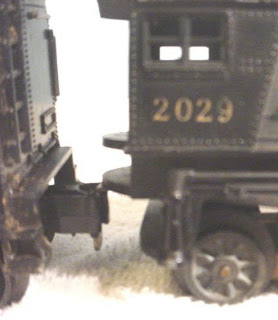 |
| More cars to add to the busy roads of the Straco layout. |
However, I'm still open for unusual pieces, as long as they fit the criteria; made in Japan in the 50s-60s, mostly or all-metal construction, originally inexpensive, and still fairly inexpensive. A pair of odd cars caught my eye the other day.
Judging by lithographic colors and the car bodies, I believe they date from the late 1950's (I welcome any additional info about these cars). Note the design -- though made in Japan, these are clearly patriotic vehicles! They're red, white, and blue, and they have stars and bars on them. (click on images to enlarge)
 |
| Patriotic, but not official. The odd design of the lithography attracted me to this pair of vehicles. |
Many of these cheap Japanese tin cars were sold in sets, with the same car body being lithographed as a police car, a fire chief car, an ambulance, and a taxi. These aren't anything like that. They just... are. Which is why I liked them.
So traffic's increased by 20% on my little Straco layout.
The real challenge is what to add next. Cars and trucks are fairly easy to find. Structures and trees are much more difficult. But part of the fun of this oddball little project is the search, so we'll see what happens.
In the meantime, I have a pair of patriotic vehicles that arrived just in time for the Fourth of July!
Total cost for the project:
Layout construction:
- Pegboard: $4.95
- Flathead Screws: $0.40
- Molding: $2.49
- SilClear: borrowed from a friend
- Green Paint: left over from another project
- Wood Screws: $3.60
- Felt Pads: $1.99
Small Houses: $3.00
Testor's Gray Paint for road: $1.29
Two Japanese toy cars: $2.00
Bandai Areo Station: $8.99
A.W. Livestock truck: $4.99
Taxi: $2.99
Ambulance: $2.99
Two Japanese patriotic cars: $6.99
Total Cost: $52.57
#Straco










